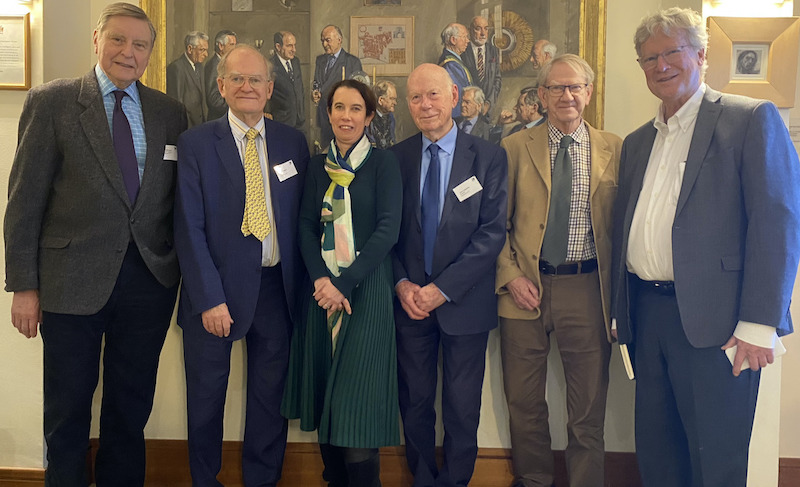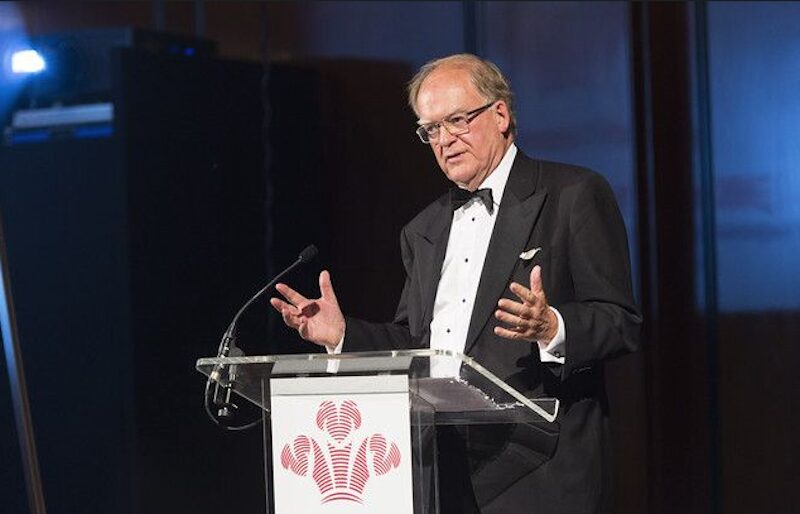Roger Graham at the 40th anniversary dinner of the Prince’s Trust (now the King’s Trust) in October 2016 where he was both an honoured guest and speaker. Photograph courtesy of Richard Holway MBE
Roger Graham OBE, who founded Archives of IT (AIT) in 2015, died on Friday 8 August, aged 86.
Following a six-decade-long career in computer services, Roger was passionate about recording the stories of pioneers in computing and IT, preserving them for posterity and inspiring future generations to develop their STEM skills and embark on a career in the tech sector.
Roger’s opinion was that up to this point heritage work involving IT was focused on saving the history of computers, hardware and games but little was being done to preserve the social and oral history of the people behind the technology.
Setting up AIT
Speaking in 2023 he said: “I thought it would be a good idea to have records of some of the leading people in the technology and the businesses of IT over the period of the past 70 years. AIT is a collection of the stories of British people, at home or abroad, who have led major activities in the IT industry.”
AIT was registered as a charity in November 2015, with the aims of educating the public on the history of IT, particularly through the provision of a digital archive of oral history interviews.
Roger was the first AIT interviewee in August 2015 and ten years later the archive has more than 300 interviews in its collection. It captures the stories from post-Second World War pioneers and early computing to current such as women in STEM, mobile phones, the internet, cybersecurity, venture capitalists, wearable health devices and quantum computing.
Drive and enthusiasm

Roger remained an active trustee at Archives of IT and his drive and enthusiasm for the charity’s mission of Capturing the Past, Inspiring the Future, particularly of late in education, has ensured its importance within the IT sector.
As a result of Roger’s vision AIT can now demonstrate how IT, telecommunications and engineering has and continues to change the way we live and work. We are also able to encourage the study of the industry’s history generally, through university placements and also provide educational resources for schools that inspire young people to consider a career in IT.
Roger’s career
Born in Harrow, North London, in 1939, Roger had fond memories of his time at Mill Hill School, to which he was awarded an academic scholarship in 1952. He went on to read engineering at Fitzwilliam College, Cambridge, where he also learnt to fly as part of the University Air Squadron and developed an interest in politics, as vice chairman of the Cambridge University Conservative Association.
Roger began his long career in the IT industry at IBM in the mid-1960s before leaving to join BIS in 1969, then a small software start-up. At BIS, Roger helped develop and sell one of the most important software packages for banking, MIDAS, which handled currency transactions when they were deregulated. He rose to chairman and chief executive of BIS and after leaving in the early 1990s, he acted as a non-executive adviser to more than 24 companies in 22 years. As an entrepreneur and adviser, he was proud to have helped develop some 3,000 IT jobs and £500m of stakeholder value.
Roger will also be remembered for his role as president of the Computer Services Association (now techUK) in the 1980s, which was developed in the belief that the industry could achieve more by working together, particularly with government, and as Master of the Worshipful Company of Information Technologies (WCIT) 2004-5. He was awarded an OBE in the 1987 New Year’s Honours.
As well as founding AIT he also established the Roger & Irene Graham Charitable Foundation, which makes donations to organisations involved in the advancement of education and those with disabilities. He would also give talks including at the 40th anniversary dinner of the Prince’s Trust (now the King’s Trust) in October 2016 where he was both an honoured guest and speaker.
You can hear Roger’s story in his own words by watching his interview with AIT.
